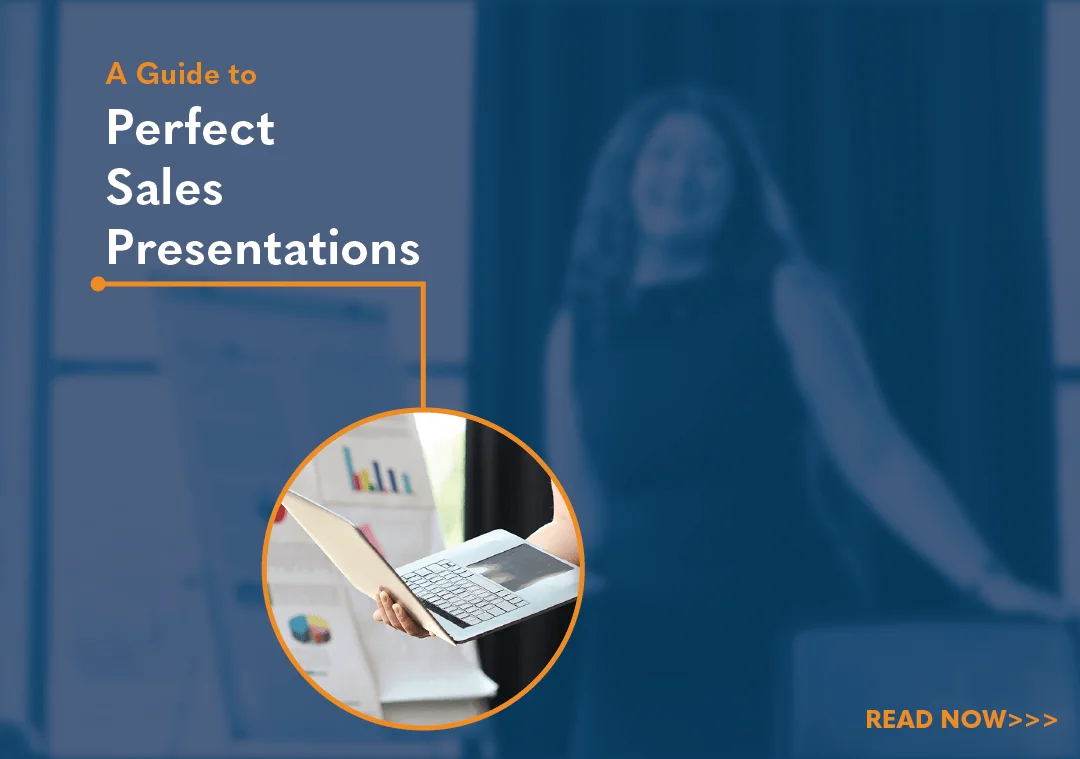A Guide to Perfect Sales Presentations

What do Account Executives have in common with Chris Rock? They’ve both been slapped in the middle of a presentation. Maybe not a physical slap like Chris Rock suffered, but a virtual slap when a prospect suddenly interrupts an online presentation. For Account Executives, every sales presentation needs to be an Oscar-worthy performance. In this article, we will outline practical tips and strategies Account Executives can utilize to avoid a Chris Rock moment and bring home the Academy Award.
Don’t Start With a Joke
Starting a presentation with a joke is a risky gamble. The best jokes work because they are delivered with context and timing. To start a presentation with a joke requires everything to be perfect. The biggest challenge is your audience likely has already heard it, and they won’t think you’re funny. The second challenge is you may end up offending someone. In today’s political climate, it’s almost impossible to imagine a joke that is appropriate for all audiences. Let’s imagine you start with a funny joke that no one has heard and is appropriate for all audiences. What are the chances it’s relevant to your audience? If it’s not relevant, you just wasted a variable opportunity to capture your audience’s attention.
Start With an Empowerment Promise
In place of starting with a joke, open with an empowering promise. Inform your audience what they will learn by the end of your presentation that they did not know at the beginning. Providing your prospects a promise of what they will learn creates anticipation and captures attention. For example, “At the conclusion of this presentation, you will learn how companies are leveraging sales training and three ways sales training can impact revenue growth.” The promise should focus on the outcome the prospect desires to achieve. With this promise, you are giving your audience a reason to pay attention.
Fence in Your Idea
A fence is a technique to separate your solution from everyone else. Just like good fences make good neighbors, including a fence early in your presentation will separate your solution from the competition. For example, “Our solution may seem similar to other solutions, but don’t get them confused. That would be a mistake because…” and then explain the difference. Your audience likely feels they are going to be victims of yet another boring presentation. The difference between your solution and everyone else’s needs to be clear and concise early in the presentation. When you build a fence, you are separating your solution from the status quo. If you are too similar to the status quo, there will be no reason to change. The fence creates separation and provides your audience with a reason to pay attention.
Skip the About Us Monologue
Modern buyers do plenty of research on their own. They don’t need a five-minute overview of the entire history of the company. Leave that for the about us page. Too often, presenters get hypnotized by the sound of their own voice and ramble on about their history, past achievements, or company growth. Remember these words, “tell them less about how it came to be and more about what’s in it for me.”
Instead of talking about yourself, give the prospect an opportunity to talk about themselves. A simple question like, “Mrs. Prospect, I’m curious what prompted you to schedule this demo today?” Another option is, “Mr. Prospect, I recognize we are under time constraints. I don’t want to do you a disservice and not cover what’s important to you. Based on what you know about our solution now, what area is most important to you?”
By asking probing questions early, the feedback you receive will help you tailor your solution to your audiences’ specific concerns. Keep in mind the purpose of the presentation. It’s not to educate the prospect on your company history, or every feature of your product. It’s to demonstrate how your solution will solve a specific concern for this specific prospect.
Don’t Be Forgotten
Here is a test. Think about how many presentations, lectures, or TED talks you’ve watched in your career. Now list how many you remember. I’ll wait. That’s the problem with presentations–we forget them faster than dew drop in the desert. If you want your presentation to be remembered, incorporate the “Five S” System:
- Symbols: Use symbols to associate your ideas. Visual perception is the best way to attract and keep attention. For example, a Rubik’s Cube with the caption, Puzzled about how to double sales?
- Slogan: A slogan is a short phrase that provides an overview of the solution. For example, “The easiest way to get work done,” a slogan used by Citrix.
- Surprise: Challenge your audience to say themselves, “Whoa, I never looked at this way before.”
- Salient Idea: Make it very clear the current state is not optimal and that your solution will provide a dream outcome future state.
- Story: Numerate the steps that others used to achieve the dream outcome.
Timing is Everything
There are 24 hours in a day, and some hours of the day are better than others for a presentation. You might want to think that anytime is the right time to get in front of your prospects, but it’s not. If you’ve ever had to sit through a presentation after a heavy lunch, you know the struggle is real. Mid-morning is the best time to schedule a presentation.
The other aspect of time is to measure how much time you spend talking. The best presenters do as much listening as they do talking. If you have a 90 percent talk, 10 percent listen ratio, you might want to consider finding more of a balance. Incorporating questions, asking for feedback, and having a Q&A session can increase your audience’s engagement, without making it awkward.
Additionally, you want to keep track of how long you spend on each slide deck. To maintain a quick pace and keep your audience engaged, you don’t want to linger on single slides for over a few minutes. If your presentation is going to be 30 minutes, you’ll need a minimum of 15 slides.
Finally, the one thing to be aware of (and maybe the most critical component), is to never go longer than your agreed-to schedule. Too often, SDRs minimize the time required when they set an appointment. Saying something like, “We just need 15 minutes” can set the wrong expectations. Very often, it can take half that time just to get everyone’s video and microphone working. If you’ve ever agreed to take a meeting and then have the meeting run over, you know the only thing you’re thinking about is, “When is this going to end.” That is the kiss of death for every account executive.
In Conclusion
Modern selling is becoming more complicated. A big challenge is obtaining your prospect’s attention and keeping it for the entire presentation. The worst thing you can do during a presentation with a prospect is to lose their attention. Once they stop paying attention, regaining it is nearly impossible.
The fundamentals we covered in this article are a great starting point to improve your presentations. If you incorporate questions, build a fence, follow the “5 S” system, and manage your time, you will position yourself as an expert presenter. But like everything in sales, presenting is like putting on a play–the only way to get better is through rehearsal. Just remember, all the best performers spend time rehearsing before a live performance. If your team could benefit from expert, guided rehearsing to improve your win rate on presentations, we can help you bring home the Oscar.

- Account Planning (11)
- Awards (50)
- Client Testimonial (37)
- Personal Branding (19)
- Podcast (11)
- Research (68)
- Sales Career Development (85)
- Sales Coaching (154)
- Sales Consulting (133)
- Sales Culture (164)
- Sales Enablement (340)
- Sales Leadership (108)
- Sales Management (242)
- Sales Negotiation (16)
- Sales Prospecting (124)
- Sales Role-Playing (18)
- Sales Training (229)
- Selling Strategies (255)
- Soft Skills (67)
- Talent Management (92)
- Trusted Advisor (27)
- Virtual Selling (41)
- Webinar (10)





























